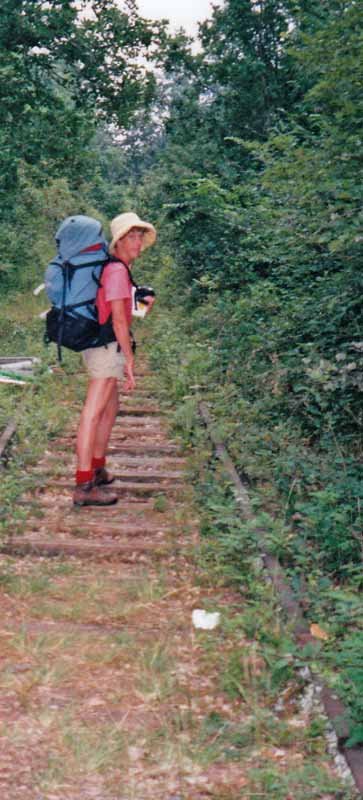
Tuesday, 10 June 2003
Distance 19 km
Duration 4 hours 15 minutes
Ascent 348 m, descent 335 m
Map 63 of the TOP 100 blue series (now superseded)
Topoguide (ref. 653) Sentier de Saint-Jacques de-Compostelle, Moissac/Condom/Roncevaux
Probably because of the threat of heat, we achieved an early start, leaving at 6:30. We continued along the flood levee, following the GR signs, but were immediately confused and had to back-track.
When we finally connected with the GR again, we were on an abandoned railway line overgrown with brambles. Some campers with motorbikes waved to us blearily from their sleeping bags on the verge.
We took the detour towards Larressingle but somehow missed our way again and ended up having to climb a steep road to arrive at our destination.
Larressingle is a thirteenth-century fortified village that has survived intact, by some miracle.
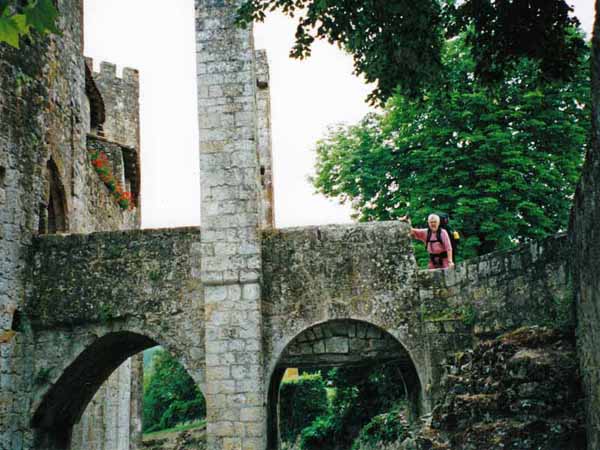
It still has its deep moat, its galleried ramparts and square towers, its peaceful enclosed cottages and church.
It was still early and the gift shops and cafes were closed, but it was clear that the place would later be swarming with tourists.
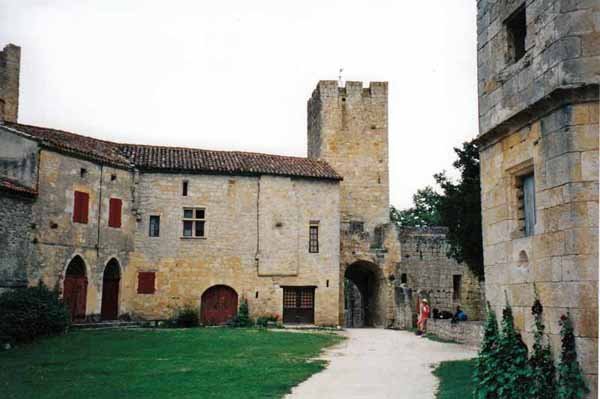
Back on the GR, we crossed a stream on a bridge built for the pilgrims of the twelfth century. Of the hostel that stood beside it, no trace remains.
Walking on paths and tiny roads through this gentle countryside, sampling cherries from occasional overhanging trees, we came to an intersection, where three men were standing round the back of a van, while a flock of people with small day packs streamed up the hill behind them.
When we got near, they turned out to be German. “Sie haben hunger? Brot? Wurst? Käse?”. They were the support team for a group of pilgrims, packing up the remains of morning tea.
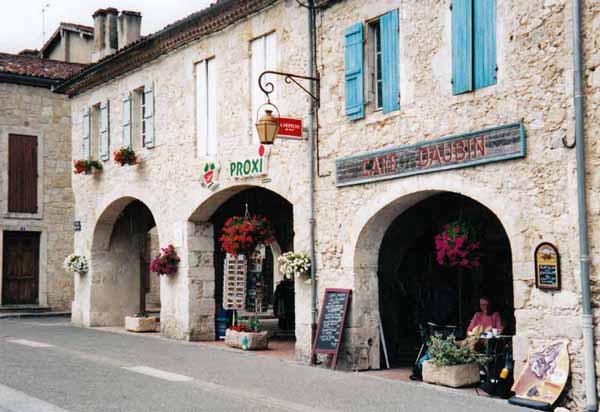
We soon had a substantial sandwich each and the van was speeding away. What timing! Munching happily, we followed a fine high road on the crest of the ridge, then crossed a stream and before long entered the streets of Montréal-du-Gers. That made two Plus Beaux Villages in one morning.
Although the outskirts were unprepossessing, at the centre was a splendid little bastide square, with a fountain, a church, a bar-restaurant and an Office of Tourism – all the necessities. The Office verified that we could camp “à la ferme” a kilometre away to the south.
After coffee (foul but still welcome) in the deep shadow of the arcades, we went down a great flight of stairs, over the bridge and along the road to the camping place.
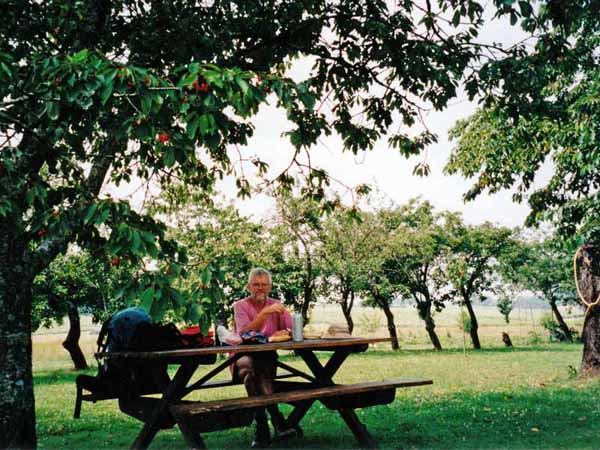
This was much better than we expected after our previous experience with camping à la ferme. It was a former cherry orchard, with manicured lawns under trees laden with fruit.
The smiling farmer urged us to eat as much as possible. The only other campers were a badly sunburnt Dutch couple stretched out on their deck chairs absorbing yet more radiation, a sight shocking to our Australian eyes.
When we went to pay, our hostess told us how we could walk across the fields to the excavated Roman villa of Séviac. It was well worth the walk, despite the heat.
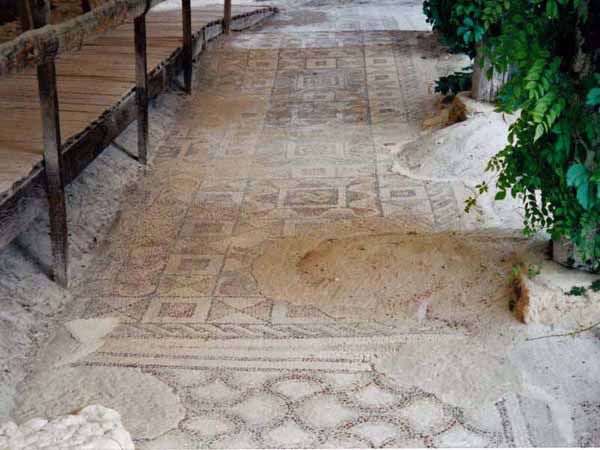
The ruins were wonderfully evocative of the ease and elegance of life amongst the Roman upper classes. Mosaic-floored rooms with all the latest comforts, such as under-floor heating, looked out onto a garden courtyard.
At one side there were three sets of pools – hot, tepid and cold (we could have enjoyed the last of these, as we were baking).
It all came to an end as the empire succumbed to the raids of the Visigoths and the villa was ruined, abandoned and eventually forgotten.
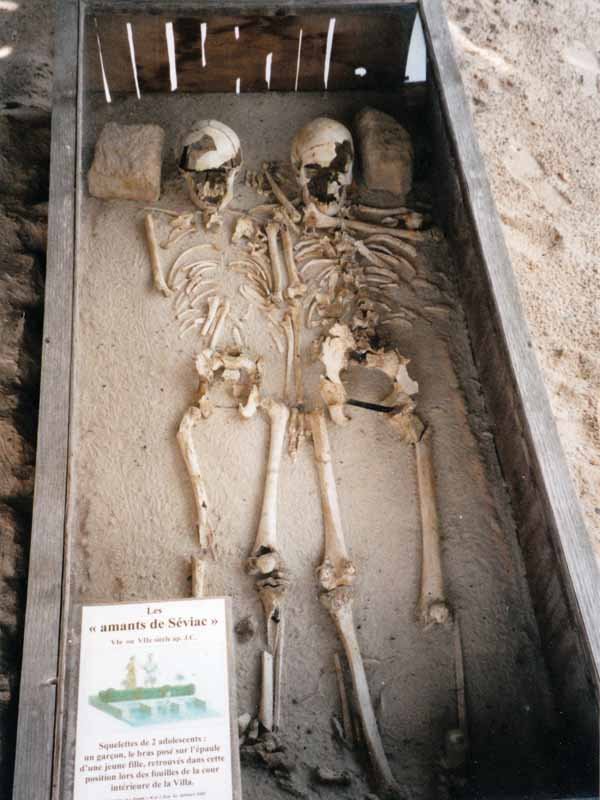
During the excavation a mysterious pair of skeletons was found in the courtyard, a young boy and girl in each other’s arms.
Back in town at 7 pm, we sat by the fountain watching the last pilgrims of the day straggle in.
One of them was carrying a great pole and a monumental, disorganised load. He had walked 40 km that day and wanted to stay at the gîte. He was not happy when we told him it was at Séviac.
He had no map or guidebook – he said, pointing skywards, that he had a higher guide, which we thought a little ungrateful since we had supplied the information.
We wandered over to the cafe, hoping their cooking was better than their coffee. It was, and there was quite a throng there. After apéritifs of pastis and rosé, we had duck confit and cassoulet, both regional specialities.
With a great display of fluency, I managed to explain that I preferred green beans to chips.
Previous section: Moissac to Condom